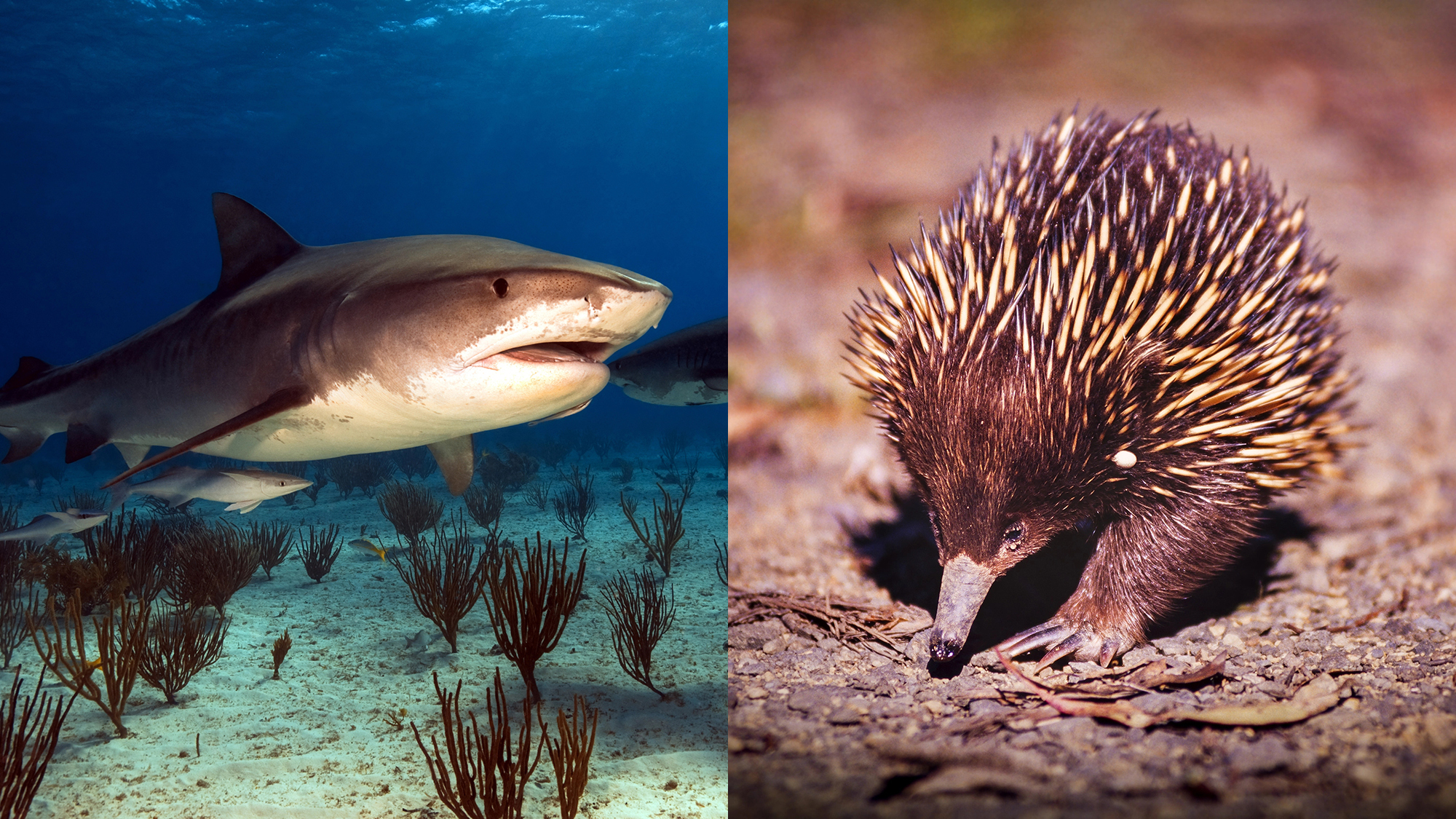A group of Australian scientists studying marine life off the coast of Queensland caught quite a surprise–a tiger shark that had vomited a spiky hedgehog-like animal called an echidna. Former James Cook University PhD student Nicolas Lubitz and his team saw the chance regurgitation during a tagging trip in May 2022 and the discovery is believed to be a world-first. The team assumes that the shark got the echidna as it swam in the shallows off the island or even between islands.
“We were quite shocked at what we saw. We really didn’t know what was going on,” Lubitz said in a statement. “When it spat it out, I looked at it and remarked ‘What the hell is that?’. Someone said to take a picture, so I scrambled to get my phone. I managed to only get one picture, but you can see the outline of the echidna in the water.”
The dead echidna was still whole when the tiger shark vomited it back up, with its spines and legs still intact. This suggests that it was a recent snack for the roughly 9 foot-long shark.
“It was a decent-sized tiger shark but it wasn’t massive. It’s very rare that they throw up their food but sometimes when they get stressed they can,” Lubitz said. “In this case, I think the echidna must have just felt a bit funny in its throat.”
[Related: Why you want to barf when you see something gross.]
Many animals can vomit after ingesting something that they shouldn’t. Whale barf aka ambergris has even been used in perfumes, medicines, and spices during commercial whaling’s heyday. Rodents, frogs, and horses are some notable exceptions to the vomit rule. Instead, rodents will typically eat non-nutritional substances, like clay and dirt, to help dilute the toxins instead of expelling them from their bodies. Frogs may even eject their whole stomachs instead when they inject something toxic.
Tiger sharks are known for voracious appetites and are some of the ocean’s most avid scavengers. According to Lubitz, They’ve been documented swallowing sea birds, tires, license plates, and television screens. The tiger shark was unharmed during this strange encounter and was also fitted with an acoustic tracker before the team released it back into the water.
In a separate find, a different tiger shark that the team had previously tagged, threw up what appeared to be half a dugong.
“It threw up a big piece of blubber and then a full vertebral column. I think it was a dugong calf it had a go at,” said Lubitz.
[Related: Turkey vultures have the ultimate self-defense technique: projectile vomiting.]
The scientists were part of the Queensland Integrated Marine Observing System Acoustic Telemetry Array Project. Researchers tagged a variety of marine life including snapper, mullet, shovelnose rays, and several species of sharks with acoustic and satellite trackers. They also placed acoustic receivers along Queensland’s coast between 2020 and 2023 to gather data on marine life living there. To date, the project has tagged 812 animals with 10-year trackers from the Gold Coast north to the Torres Strait. Complete data downloads from the array will be available at the end of the year.
“There’s always been acoustic receivers along the Queensland coastline but they were sort of disconnected and weren’t picking up a lot of big movements,” said Lubitz. “With the Queensland Array, we’ve filled a lot of gaps and through that work we’ve picked up movements of species like shovelnose rays traveling from Townsville to the Sunshine Coast, which people never thought were migratory at all. They’re a critically endangered species and we’ve caught and tagged some that are almost three meters [9.8 feet] long.”

